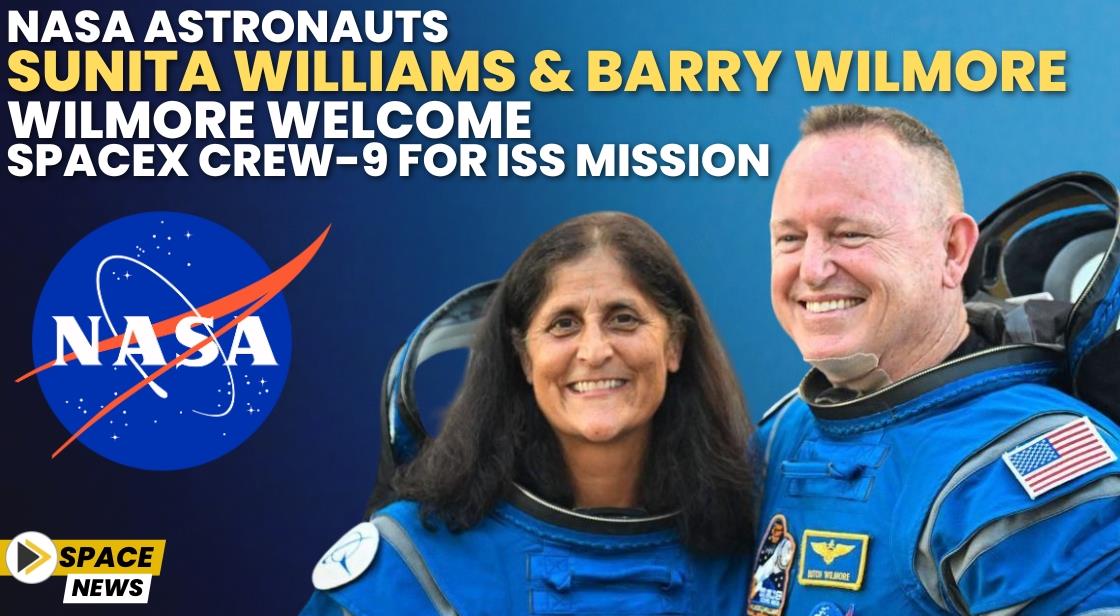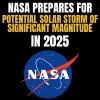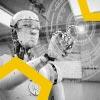NASA Astronauts Sunita Williams and Butch Wilmore Welcome SpaceX Crew-9 for ISS Mission

News Synopsis
After months of uncertainty and logistical challenges, NASA astronaut Nick Hague and Roscosmos cosmonaut Aleksandr Gorbunov have successfully docked with the International Space Station (ISS) aboard SpaceX’s Dragon capsule. The mission, which aims to bring home stranded astronauts Sunita Williams and Butch Wilmore, marks a crucial step in what has become an extended and unplanned stay for the two astronauts aboard the ISS since June 2024.
Upon their arrival, Hague and Gorbunov were greeted by the Expedition 72 crew, which includes Wilmore and Williams. The SpaceX launch, which occurred on Saturday, is part of a larger rescue operation scheduled to bring the astronauts back to Earth by early 2025.
The docking process was completed at 7:04 p.m. EDT, with Hague and Gorbunov successfully opening the hatch between the ISS and the pressurized mating adapter. This was followed by the opening of the Dragon capsule's hatch, enabling the astronauts to join their colleagues aboard the ISS, as confirmed by an official statement from NASA.
NASA’s Sunita Williams and Butch Wilmore: Welcoming the Crew-9 Team
The Expedition 72 crew, composed of NASA astronauts Matthew Dominick, Michael Barratt, Jeanette Epps, Don Pettit, and the returning Sunita Williams and Butch Wilmore, was prepared for the arrival of the new team members. Along with them were Roscosmos cosmonauts Alexander Grebenkin, Alexey Ovchinin, and Ivan Vagner, forming a robust international crew to greet the incoming Crew-9 members.
In a post on X (formerly Twitter), NASA’s Johnson Space Center shared the excitement, stating, “The official welcome! The Expedition 72 crew welcomed Crew 9, Commander Nick Hague and Mission Specialist Aleksandr Gorbunov, after their flight aboard the SpaceX Dragon spacecraft.”
For a brief period, the number of crew members aboard the ISS swelled to 11 as Crew-9 joined Expedition 72. This situation will persist until early October when Crew-8 members Matthew Dominick, Michael Barratt, Jeanette Epps, and Alexander Grebenkin are scheduled to return to Earth, slightly reducing the station’s crew size.
SpaceX Launch Delivers Critical Supplies Alongside the Two-Man Crew
On Saturday, SpaceX launched a smaller-than-usual two-member crew to the ISS, a departure from the typical four-member Dragon crew composition. The Falcon 9 rocket carried critical supplies while leaving room for the future return of astronauts Wilmore and Williams. This launch follows an extended stay in orbit for the two astronauts, who were initially scheduled for a much shorter mission.
The launch had been delayed by two days due to adverse weather conditions associated with Hurricane Helene but eventually lifted off successfully from pad 40 at Cape Canaveral Space Force Station at 1:17 p.m. EDT. The Falcon 9 rocket followed a northeast trajectory, aligning with the ISS’s orbital plane.
During the flight, Nick Hague monitored the spacecraft’s automated systems alongside Aleksandr Gorbunov, a cosmonaut making his first trip into space.
Why Was the Crew Size Reduced? Starliner Astronaut Seats Reassigned
Crew Dragon missions typically involve four crew members, but this time, only two were sent into space. NASA’s Stephanie Wilson and Zena Cardman, initially part of the Crew-9 mission, were removed in August to accommodate seats for Starliner astronauts Butch Wilmore and Sunita Williams. This was done to ensure their safe return to Earth in February 2025.
Williams and Wilmore originally launched aboard Boeing’s Starliner spacecraft on June 5 for its inaugural crewed mission. They successfully docked at the ISS on June 6. However, following NASA’s evaluation of potential risks, it was decided that Starliner would return to Earth without its crew. This precautionary measure was based on a detailed assessment made by NASA in August 2024.
Starliner successfully returned to Earth on September 6 after an autonomous re-entry and landing. NASA deemed it “too risky” to use Starliner for the return of Williams and Wilmore, opting instead to schedule their return aboard a Dragon spacecraft early next year.
Extended Stay for Williams and Wilmore on ISS
Originally, Williams and Wilmore’s mission was supposed to be a week-long test flight. However, due to unforeseen challenges, including the return of Starliner without its crew, their mission was extended to nearly eight months. This makes their time aboard the ISS one of the longest unplanned stays for a test mission in recent history.
NASA confirmed, “Wilmore and Williams will continue their work as part of the Expedition 71/72 crew through February 2025. They will return home aboard a Dragon spacecraft alongside two other crew members assigned to NASA’s SpaceX Crew-9 mission.”
What’s Next for Starliner?
Starliner is expected to perform further test missions before it is fully integrated into NASA’s crew rotation system. The spacecraft’s next test flight, initially slated for late 2024, will aim to resolve any remaining issues and build confidence in its capabilities for future manned missions.
Conclusion:
NASA’s Crew-9 mission not only brought vital supplies to the ISS but also signaled the beginning of the end for an unplanned extended stay for astronauts Sunita Williams and Butch Wilmore. With SpaceX's Dragon capsule now safely docked, the focus shifts to ensuring their safe return to Earth in early 2025. The mission highlights both the collaborative spirit of international space exploration and the evolving role of private space companies like SpaceX in supporting NASA’s long-term goals.
You May Like









